Lesser Nighthawks
In the sunset skies above Tucson right now
Lesser Nighthawks show up in the Tucson area in April. Throughout the summer, you can find them flying in the sky hunting for insects at dusk and at dawn. Towards the end of May I heard that there were many Lesser Nighthawks at Agua Caliente Park so I headed over there one evening.
As the sun was setting, the air began to fill with Lesser Nighthawks flying all over the lakes at Agua Caliente. Early in the season, you can hear the Nighthawks making a wonderful "trilling" noise for both courtship and territorial purposes. At this point in the summer they are no longer making that sound, but listen to that unique song here: https://www.allaboutbirds.org/guide/Lesser_Nighthawk/sounds
The range map, from the AllAboutBirds site, shows Lesser Nighthawks to be borderlands breeding birds, yet another of southern Arizona's specialties!
In flight, they flutter buoyantly like butterflies. AllAboutBirds describes their flight this way: "They alternate between snappy wingbeats, fast flutters, and short glides with the wings held in a V." At Agua Caliente, we saw them with mountains or clouds in the background, flying low over water, or in front of vegetation that was glowing golden in the light of the sunset.
Lesser Nighthawks are about 8 or 9 inches long with a wingspan of almost two feet. They have a long tail with a notch at the end, and they have two white bars near the ends of their wings. Their bill is very tiny but they open their mouths very wide to capture insects in flight.
The wings often look like boomerangs to me in the photos. In real life, the birds' movements are mesmerizing. It is only in the snapshots that you can see how their wing shape varies depending on how they are turning in the air.
In the city, you may see Lesser Nighthawks swirling around tall lights. At Agua Caliente they were moving all through the variable landscape.
I like these images of two Nighthawks flying in different directions, with their reflections in the water just below them.
And again, not quite two ships passing in the night. Are they aware of each other? Are they competing for the same insect? Their flights don't seem to change when they pass by each other, so no avoidance behavior was noticed by me.
And up in the clouds.......
For another look at a past newsletter on Lesser Nighthawks, see my post from June of 2020.
Lesser Nighthawks lay their eggs right on the ground in the heat of a Tucson summer. I was able to observe one mother Nighthawk in July of 2020 and write about her .
One week later I shared more photos of the growing chick, documenting her early life .


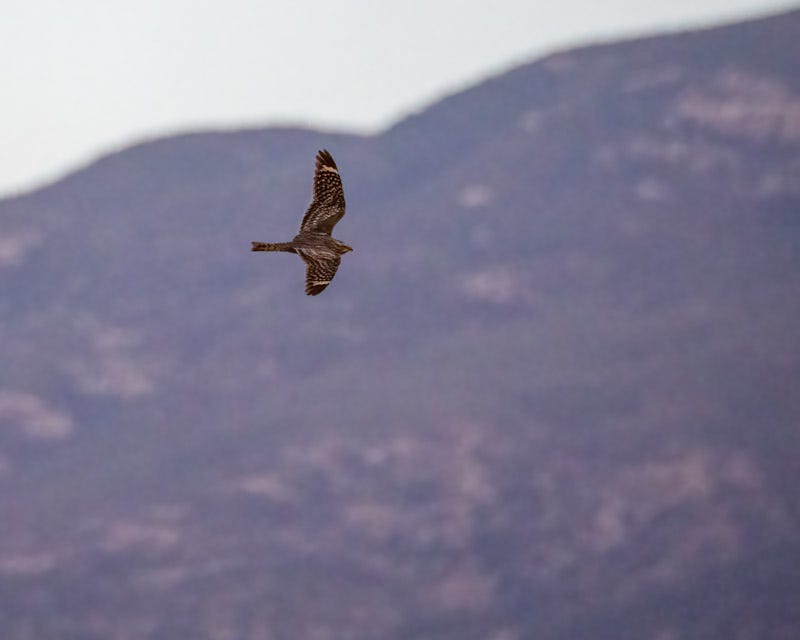
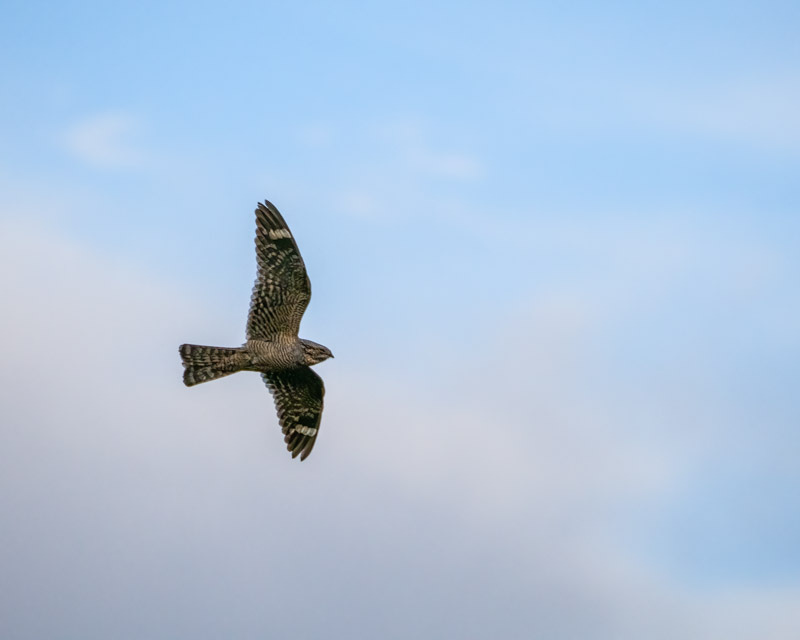
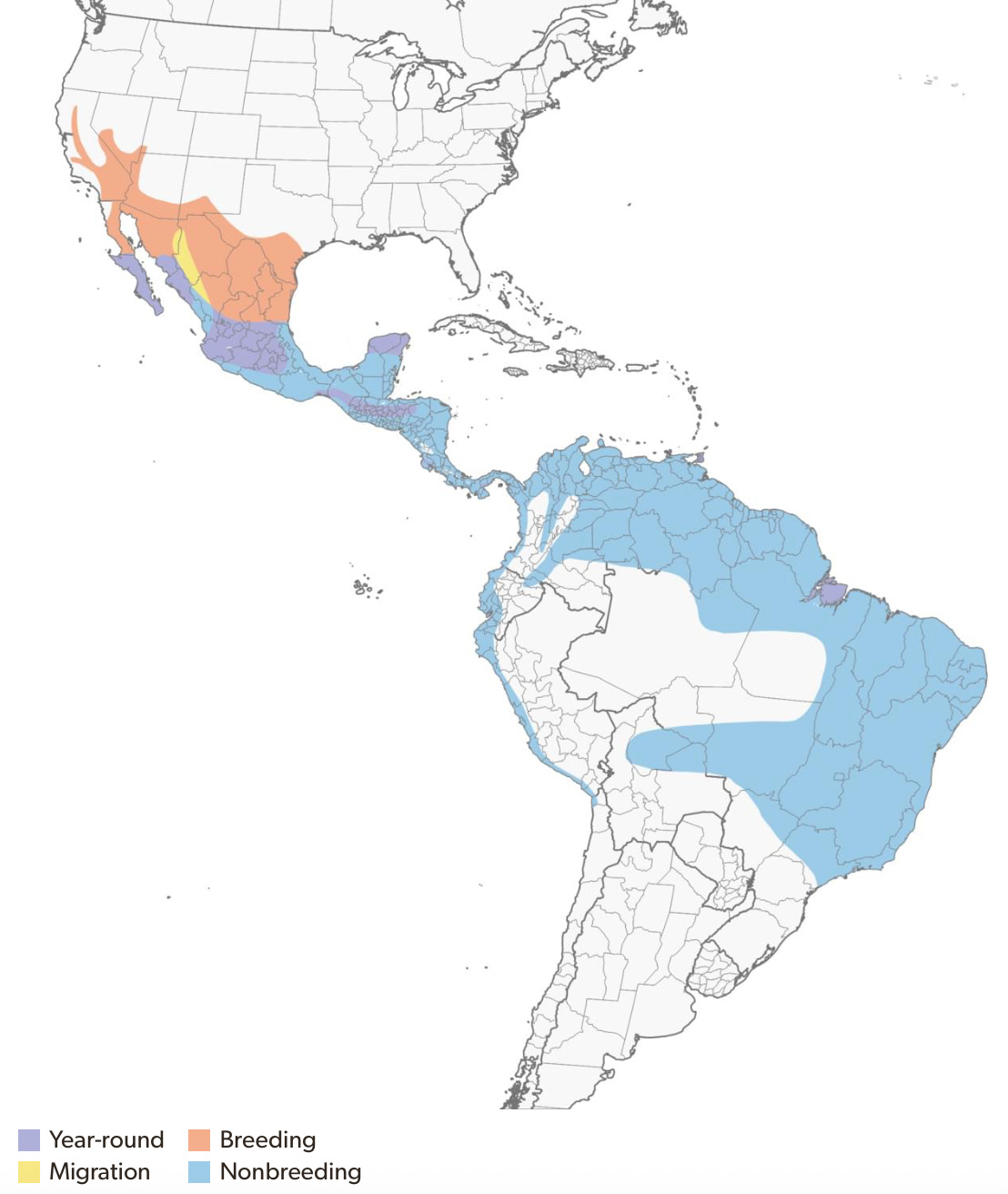
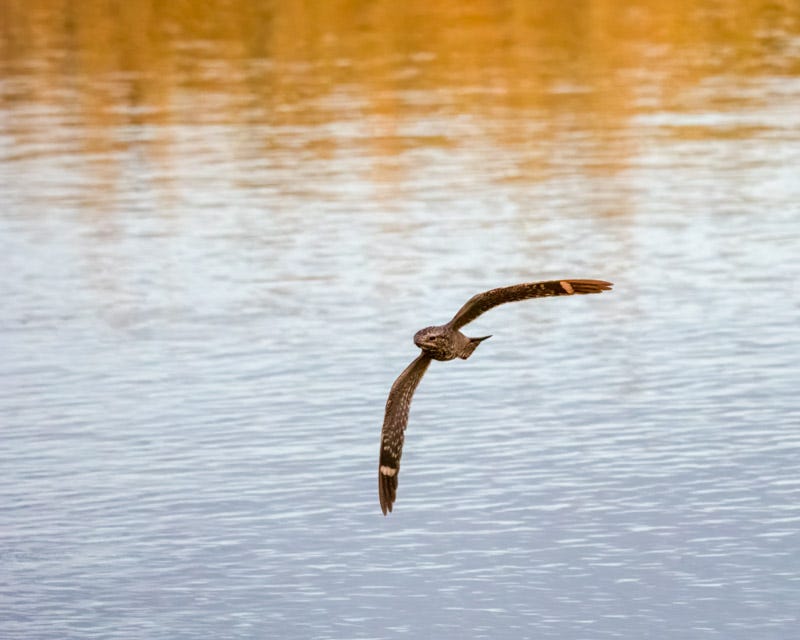
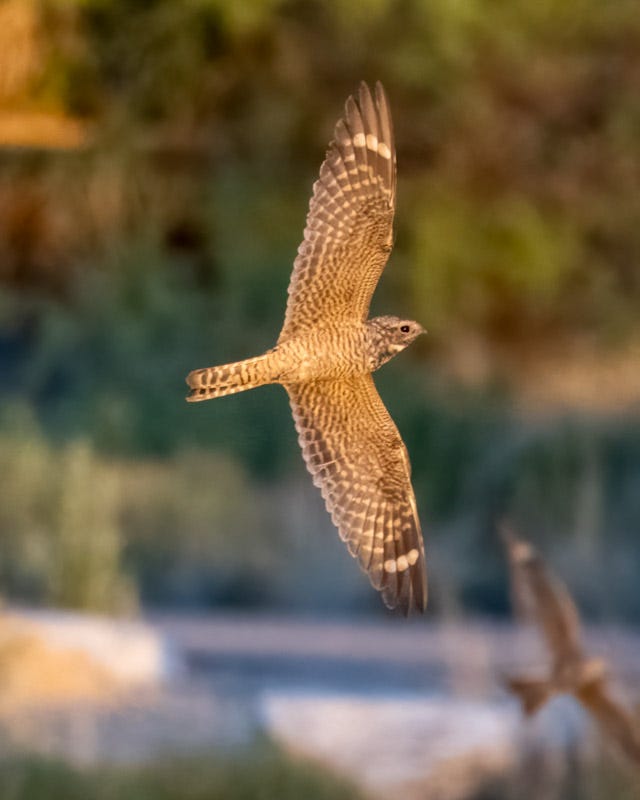
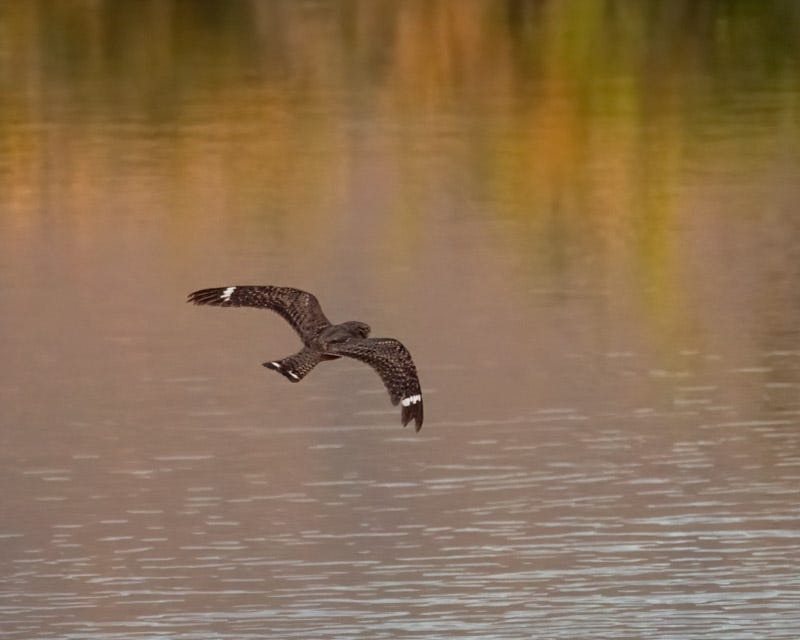
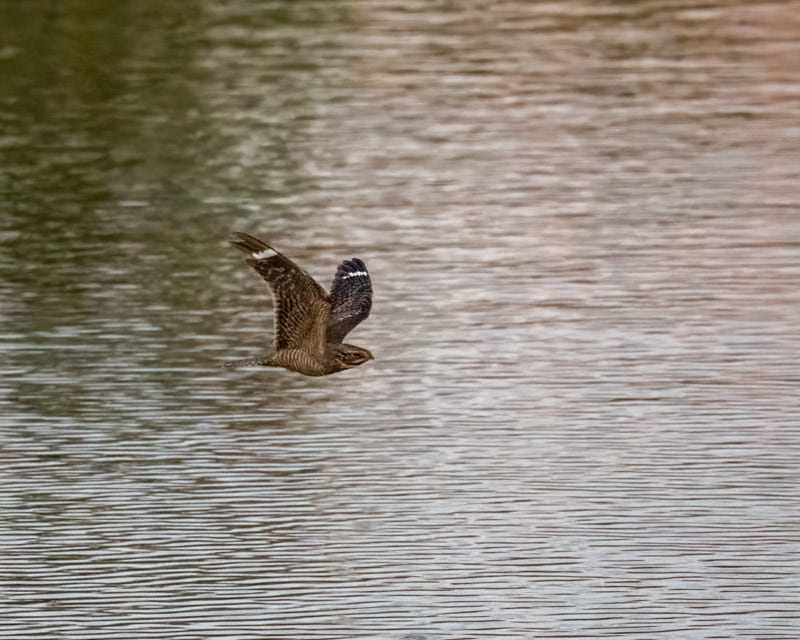
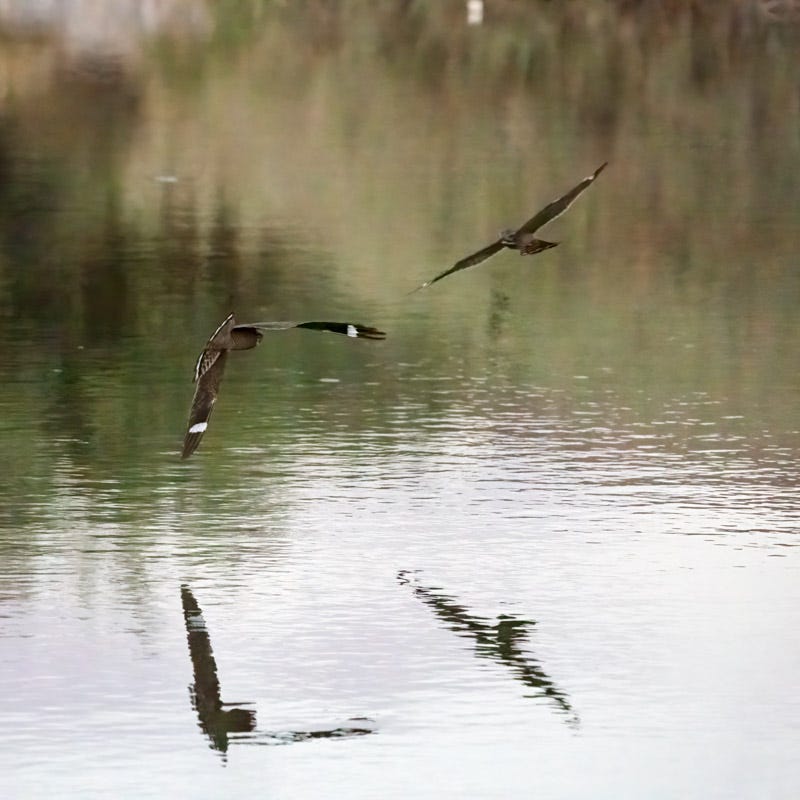
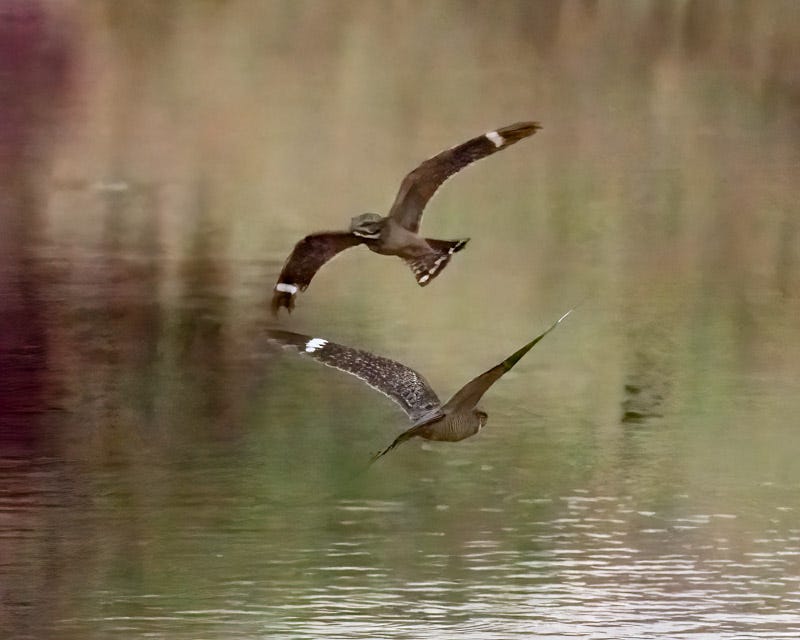
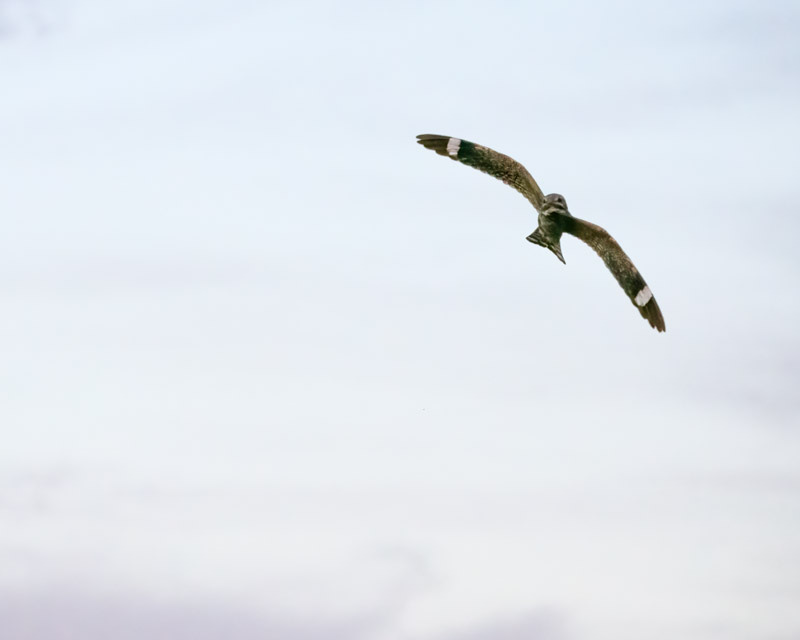
Just took a look at all the Lesser Nighthawk shots you have shared and congratulate you on a remarkable documentation of a seldom seen species. Thanks for putting the time, talent and energy into sharing. So glad you love to teach!
Excellent post, outstanding images!